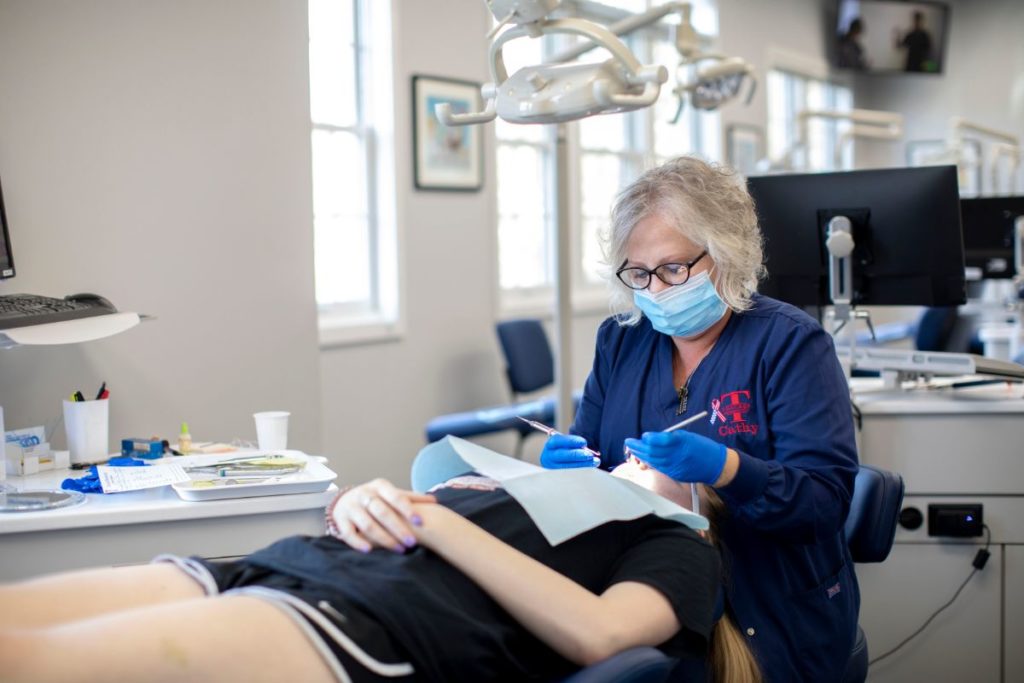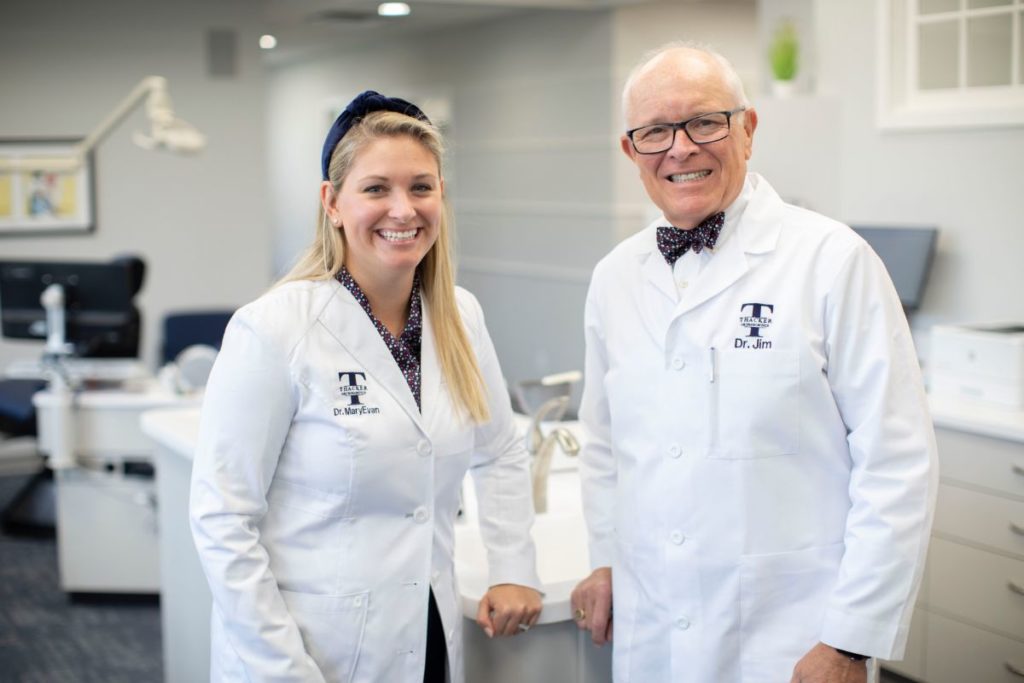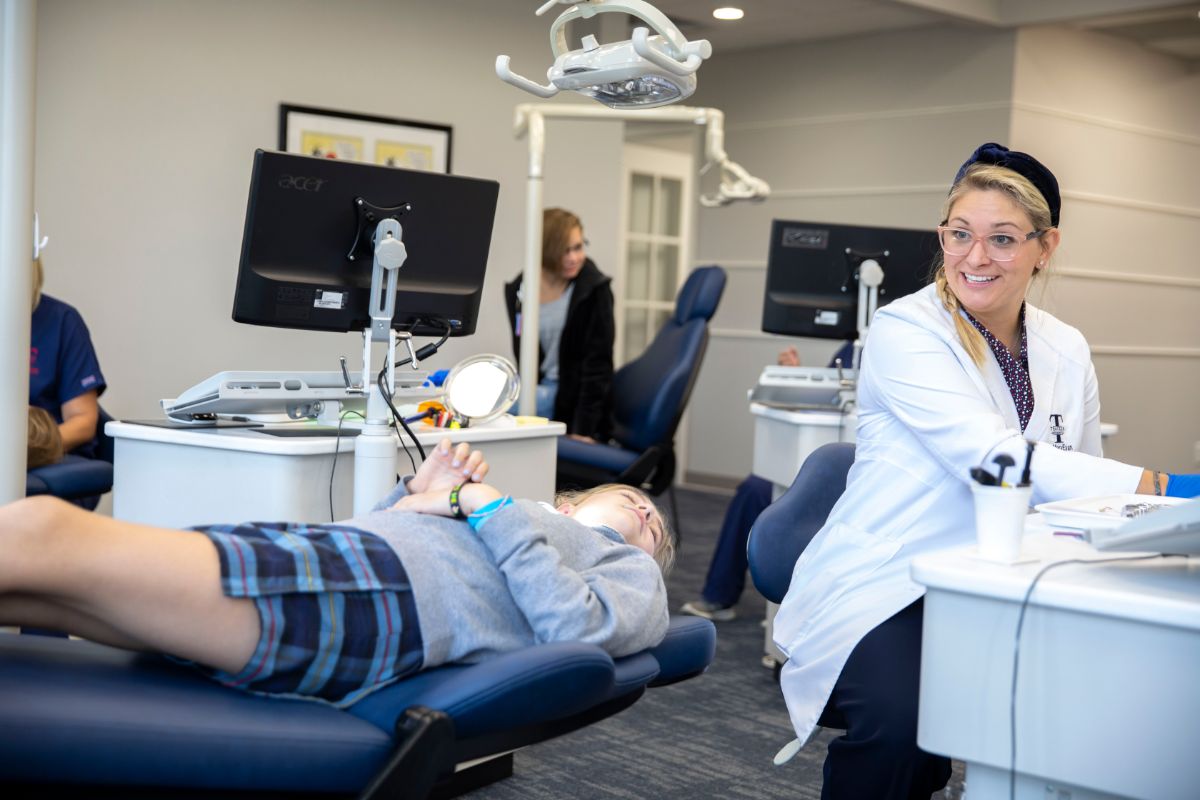At Thacker Orthodontics, the road to your perfect smile begins with knowing exactly what to expect from the orthodontic process. We want you to feel respected, informed, and empowered from beginning to end! Choosing to improve your oral health with orthodontic treatment is a big decision, after all, and you shouldn’t trust something as important as your smile to anything less than an experienced orthodontist. But what if you’re not sure how to go about finding one? We’re here to help! Here are 3 questions to ask when choosing an orthodontist.
To start your orthodontic journey off on the right foot, our expert team has put together this list of important questions to ask any orthodontists you’re considering so that you can make an informed decision about your care. Let’s take a closer look at what you should know before committing to–and investing in–a particular practice!
Is the doctor a trained orthodontic specialist?
It may seem obvious, but in reality, this is the most important question you can ask when considering braces treatment or clear aligner therapy. That’s because some general dentists are also able to provide orthodontic treatment, even though they don’t specialize in it.
A general dentist will typically offer common dental services such as crowns, fillings, dentures, and occasional orthodontic treatment like Invisalign. An orthodontist, on the other hand, spends their days providing only orthodontic services.
This distinction matters a great deal. Imagine for a moment that you or your child required specialized treatment or surgery. Would you feel comfortable with your family physician handling your case, or would you prefer a dedicated specialist?
Orthodontists are essentially dentists who also have several years of additional specialized training and experience. This means an orthodontist has:
- Studied the growth and maturation of the teeth and jaw
- Been introduced to numerous case studies
- Developed diagnostic skills
- Learned biomechanical techniques to properly move teeth
- Studied how to change the development of the dental alveolar complex and facial growth of younger patients
To give you an idea of how competitive orthodontic residency programs are, they only accept the top students in any dental school graduating class! These orthodontic programs last around 2-3 years and include full-time training that focuses on correcting orthodontic issues with braces and aligners. While there are exceptions to every rule, most dentists won’t possess this same level of exhaustive orthodontic training and experience.
Dr. Jim earned his Bachelor of Science Degree from Ohio State University in 1978, followed by his Doctor of Dental Surgery Degree from Case Western Reserve University in 1982. Upon completion of a two-year graduate residency, he was awarded his degree in Orthodontics from Boston University in 1984.
Dr. MaryEvan attended Vanderbilt University to earn her undergraduate Bachelor of Arts in Biological Sciences degree in a minor in Medicine, Health, and Society. Dr. MaryEvan then attended the University of Louisville School of Dentistry, where she earned her Doctor of Dental Medicine degree, graduating Magna Cum Laude and third in her class. While a student there, she was elected to membership in Omicron Kappa Upsilon, the National Honor Dental Society, for her exceptional academic performance.
In 2014, Dr. MaryEvan completed a one-year Craniofacial Biology program at the University of Kentucky Department of Orthodontics. Dr. MaryEvan completed her three-year orthodontic residency training at the Boston University Henry M. Goldman School of Dental Medicine. She graduated with a Certificate of Advanced Graduate Study in Orthodontics and a Masters of Science in Dentistry.

What treatment options does the orthodontist offer?
Thacker Orthodontics is proud to offer the following treatment options to patients of all ages.
Metal braces
Traditional metal braces are still the most widely used orthodontic appliance, and have come a long way in recent years! They’re typically made of a mix of high-grade stainless steel, nickel, and other durable metals. Bands wrap around the back molars, and smaller metal brackets are cemented to the front surfaces of the other teeth. There is also a thin, springy metal wire that runs through the brackets. This wire is what pulls your teeth in the direction they need to go.
Clear braces
Sometimes called ceramic braces, these function in the same way metal braces do, but are made of clear materials instead of stainless steel. Because they’re not as obvious as traditional braces, they’re popular with older teens and adult patients who may be more image-conscious. They are larger and more brittle than their metal counterparts, so we tend to use them on the upper front teeth more often than the lower teeth.
Invisalign
The Invisalign system is made up of a series of customized aligners that are nearly invisible and completely removable. No brackets or wires required! This means you get more flexibility and freedom than you could ever get with traditional braces. When worn the recommended 20-22 hours per day, and changed out weekly with the next in the set, these aligners will gradually move your teeth into the desired positions.
Invisalign Teen
Although Invisalign and Invisalign Teen work the same way when it comes to the underlying technology, Invisalign Teen was developed with the unique needs of teen patients in mind. There are a few special features that are specific to the Invisalign Teen system, including compliance indicators, eruption tabs, and replacement aligners.
How frequent are follow-up visits with the orthodontist?
No matter what the plan is for your smile goals, you’ll be coming to our office regularly. For most patients, adjustment appointments will be scheduled for every 4-8 weeks or so. During these visits, Dr. Jim or Dr. MaryEvan will replace any worn-out rubber bands, check the progress your teeth are making, and make adjustments to the wires to ensure that the teeth are moving in the right direction.
Invisalign patients may be seen slightly less frequently. However, these appointments are still an essential part of the orthodontic process, so try not to miss them!
While treatment time will always vary from case to case, the average patient will spend anywhere from 12-36 months years in treatment. You’ll be seeing us pretty often throughout your orthodontic journey!

Put your smile in the best hands with Thacker Orthodontics
Our doctors have the education, skills, and experience to provide you with the best in high-quality orthodontic care. They can give you a gorgeous smile with long-lasting results. If you’re ready to take the first step in your orthodontic journey, we would love to meet you and talk more about how we can help you achieve the smile you desire. This is the perfect time to take the first step towards improved oral health, so get in touch today to schedule your FREE consultation with us!
